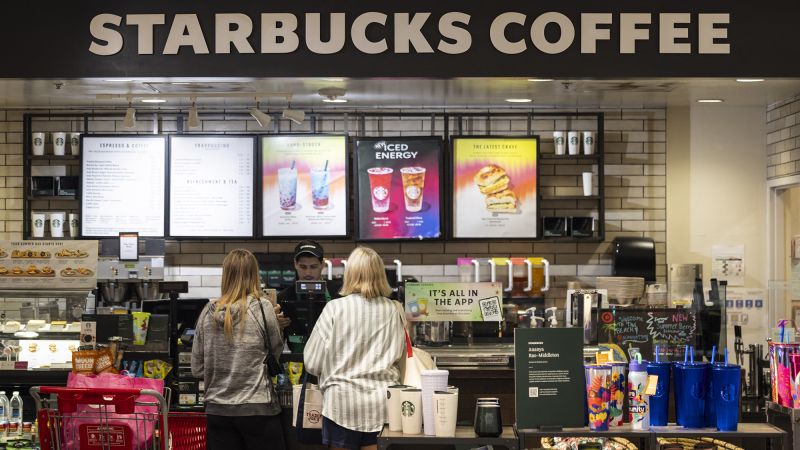Starbucks has recently experienced a decline in sales, largely attributed to the shift in its business model from a traditional sit-down coffee shop to one where customers place orders on their phones and pick up drinks from the counter. In an effort to reverse this trend, the new CEO, Brian Niccol, plans to focus on improving the in-store experience by returning Starbucks to its roots as a “community coffeehouse” with comfortable seating, design, and a clear differentiation between “to-go” and “for-here” service. Niccol is well-known in the restaurant industry for his ability to turn around struggling businesses, having previously worked with Chipotle and Taco Bell. He is now faced with the challenge of revitalizing Starbucks’ business amid mounting pressure from employees and investors.
Over the past two quarters, Starbucks has experienced a decline in sales, with some customers expressing frustration over high prices, slow pickup orders, and limited food options. The company has also faced challenges related to employee dissatisfaction, with a wave of union organizing at stores resulting from concerns about working conditions, pay, and benefits. As Starbucks transitions from a traditional brick-and-mortar company to an online-driven business, mobile app and drive-thru orders have come to dominate sales at its US stores, accounting for over 70% of total sales at approximately 9,500 company-operated locations.
Niccol’s approach to improving the Starbucks experience involves visiting stores, speaking with employees and customers, and addressing key issues such as transactional environments, overwhelming menus, inconsistent products, long wait times, and hectic handoffs. He plans to focus on empowering baristas by providing them with the tools and time necessary to craft great drinks, acknowledging that mobile orders can overwhelm stores and strain workers. While some have criticized Niccol for not permanently relocating to Starbucks’ Seattle offices and using a corporate jet for commuting, the company emphasizes that he will spend time in stores, at headquarters, and with employees globally.
In an effort to revitalize the Starbucks brand, Niccol aims to enhance the in-store experience by recreating the atmosphere of a “community coffeehouse” with comfortable seating, inviting design, and a clear distinction between “to-go” and “for-here” service. This focus on improving the in-store experience is part of a larger strategy to address declining sales and customer dissatisfaction. Niccol’s reputation as a turnaround specialist in the restaurant industry lends credibility to his ability to lead Starbucks through this period of transition and uncertainty.
As Starbucks continues to evolve into a more online-driven business, Niccol recognizes the need to prioritize the in-store experience and empower baristas to deliver high-quality beverages to customers. By engaging with employees and customers directly, Niccol is able to gain insights into the challenges facing Starbucks stores, such as overwhelming menus, inconsistent products, and long wait times. He plans to address these issues by providing baristas with the necessary tools and support to improve the overall customer experience and drive sales. Through his hands-on approach and commitment to visiting stores and engaging with employees globally, Niccol aims to lead Starbucks into a new era of growth and success.













